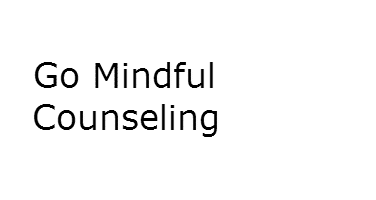
If anxiety impacts your life, you know how crippling the physical and mental symptoms can be. Catastrophizing thoughts and physical symptoms stemming from tension can interfere with day-to-day living and hold you back from doing the activities you enjoy.
Common anxiety symptoms include repetitive catastrophizing thoughts, fear, restlessness, tension, sweating, trembling, increased heart rate, rapid breath, insomnia, and difficulty focusing or concentrating.
Low levels of anxiety are a normal response and can be beneficial in reducing impulsive decision-making and maintaining physical and mental safety. High levels of anxiety are debilitating and affect the overall quality of life.
Anxiety can activate the amygdala, the oldest portion of the brain responsible for the flight, fight, and freeze response. The prefrontal cortex, the control center for logic and reasoning, goes offline, and irrational thinking takes over. Stress hormones, cortisol, and adrenaline flood the body speeding up the breath, increasing the heart rate and raising blood pressure. Prolonged anxiety and stress make the body prone to heart disease, cancer, and digestive complications.
Dr. Herbert Benson wrote the bestseller Relaxation Response. Five steps Dr. Benson recommends to reduce anxiety and stress:
- Sit in a comfortable upright position and relax the muscles in the body.
- Close the eyes and focus on the breath.
- On each exhalation, silently repeat a chosen word or phrase.
- Mentally note “oh well,” when thoughts inevitably arise and then return attention to the breath.
- Practice the relaxation response daily for ten to twenty minutes to reduce stress and anxiety.
Anxiety is on a spectrum from mild worry to panic disorders. When anxiety interferes with day-to-day activities and impacts mood, online cognitive-behavioral therapy and meditation can prove beneficial in reducing symptoms.
Here is a brief overview of anxiety disorders and symptoms:
Generalized anxiety disorder (GAD) is when the anxiety or worry becomes persistent and affects multiple areas of life. Catastrophizing thoughts take over and are out of proportion to the actual activity or event. There is a tendency toward expectations of worst-case scenarios, which are a thinking distortion. Cognitive-behavioral therapy can be very effective in reducing symptoms.
Social anxiety disorder is when self-consciousness and fear of judgment cause dread and avoidance behaviors. If you struggle with social anxiety, you may choose to stay at home rather than accept an invitation to dinner or a party restricting your social life and support.
Obsessive-compulsive disorder (OCD) is persistent unwanted thoughts, urges, or images that repetitively arise. Urges can feel irresistible affecting daily functioning, and stress can aggravate symptoms. Tracking and standing up to unwanted thoughts and urges can provide symptom relief.
Phobias are specific fears. It can include fear of small spaces, darkness, wind, spiders, dentists, heights, flying, and public speaking, to name a few. Symptoms may include sweating, trembling, rapid heartbeat, and chills. Cognitive-behavioral therapy and exposure therapy help provide tools to manage the symptoms.
Panic attacks are intense fear responses that can feel like you are dying. Symptoms can include a racing heart, rapid breath, and sweating. Panic attacks appear to come out of nowhere and can lead to ongoing fear, perseveration, and restriction of activities due to worry that it will happen again.
Post-traumatic stress disorder (PTSD) can be triggered by witnessing or experiencing severely stressful and frightening events. Symptoms may include high levels of anxiety, nightmares, night terrors, uncontrollable thoughts of the event, and flashbacks. Cognitive-behavioral therapy is the most effective treatment.
The most effective treatments for anxiety disorders are cognitive-behavioral therapy (CBT) and exposure therapy, mindfulness, and meditation.
Cognitive-Behavioral Therapy focuses on anxious thinking distortions and negative behavior patterns. Water dripping on a rock will change the surface. Redirect the water flow, and a new route will form. The brain creates neural pathways from repetitive thinking, so fabricating positive thoughts develops new neural pathways to bypass the old dysfunctional ones. The old connections do not go away, but that can serve to increase diligence and mindfulness.
The therapist may teach written exercises to transmute anxious thoughts, engage in role-play, utilize reality testing to challenge thinking, exposure therapy to face fears, and educate on brain function and cognitive distortions.
Cognitive distortions are erroneous, negative, and restrictive ways of evaluating situations. Catastrophizing is the most common distortion that increases anxiety. Expecting the worst-case scenario and thinking you will not be able to stand it is the root of anxiety. The pattern can also include thinking that things are too good to be true while waiting for the other shoe to drop.
Mindfulness practices can help reduce anxiety by creating a gap between a thought and a reaction. Pausing and checking in with the breath, body and mind create space to transmute thinking, slow the breath, and notice what the mind feels like without judgment.
Questions to ask to increase mindfulness while lowering anxiety:
- What does my breath feel like? Note whether the breath is long or short. A long breath fills the belly on the inhalation and completely empties on the exhalation. Note the speed of the breath. Notice the texture of the breath. Is it smooth or rough?
- What does my body feel like? Take the time to mentally scan the body from the top of the head to the toes. Note any place that feels tense or tight.
- What does my mind feel like? This is a unique question that requires directing attention to the felt sense, not the actual thoughts. Does the breath feel light or heavy? Dark? Floating or grounded? You can be playful and poetic with this response.
Once you are aware of how the breath, body, and mind feel, you can make the conscious decision to create change and lower anxiety. If the breath is short, focus on lengthening the inhalation and exhalation. Then direct the breath to areas of tension in the body. Once the tension in the body begins to release, there will be a softening of the anxiety.
The benefits of mindfulness and meditation
The benefits of mindfulness and meditation on anxiety and stress are well studied and documented. Mindfulness is focused on nonjudgmental attention in the present moment. It creates an opportunity to observe sensations in the body and thoughts rather than react in habituated ways such as self-medicating and numbing with recreational drugs, alcohol, gaming, TV, or eating.
Meditation teaches how the mind works and witnesses its interconnection with the body. Focusing on the breath while watching thoughts rise and fall without reactivity drops stress and anxiety dramatically. It is important to observe thoughts and sensations without grasping, clinging, or desiring them to be different. This creates a sense of freedom and allows for natural movement and change to anxious states. Meditation teaches us to not believe or grasp onto anxious thinking taking away its power.
The best approach to long-term anxiety reduction is to develop a healthy routine consisting of daily mindfulness, meditation, and writing exercises to transmute anxious thoughts. Taking these steps to build new neural pathways in the brain will immunize you from future anxiety.
- Can Exercise Help with Anxiety? - December 18, 2023
- Can Supplements like Magnesium and Ashwagandha Help with Anxiety? - November 10, 2023
- 50 Ways To Increase Happiness - September 25, 2023
